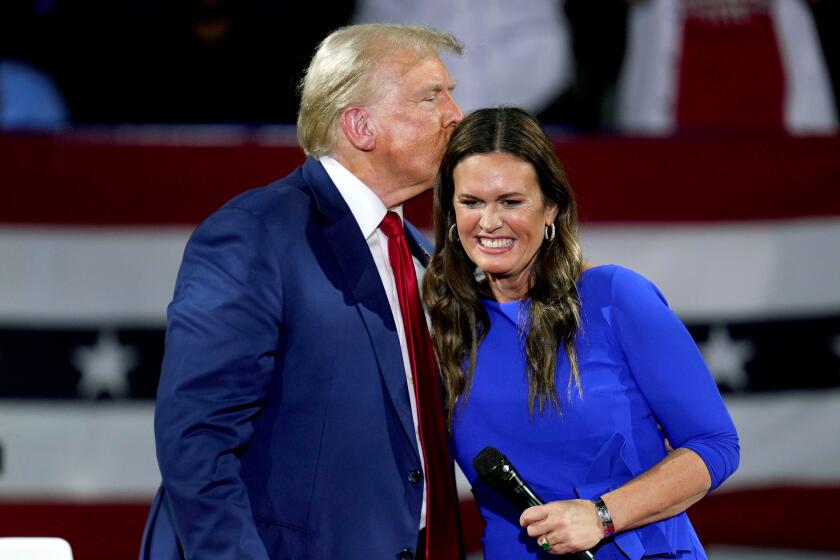Review: ‘Little America’ a searing study of the U.S. in Afghanistan
Late in his scalding and in-depth critique of U.S. policy and performance in Afghanistan, “Little America: The War Within the War for Afghanistan,” Rajiv Chandrasekaran visits Garmser, a village in Helmand province near the border with Pakistan.
Two dozen Marines had been killed as they pushed the Taliban out of the Garmser region. More than a hundred had been wounded. The U.S. had poured nearly $2 billion into the reconstruction effort, Chandrasekaran reports. To make sure that Garmser would not slip back into Taliban control, more time, more money and more body bags would be needed. Chandrasekaran, senior correspondent and associate editor at the Washington Post, is appalled at the policy devised by the U.S. military and political leadership that sent the Marines to such an obscure outpost:
“All this for a district of 150,000 peasants who live in mud-walled homes. Was it worth it?” the author asks. “Garmser was far from Kabul. Its poppy harvest was not the insurgency’s life-blood. It had never been home to an al-Qaeda training camp. Was this what America had gone to Afghanistan to accomplish?”
As Chandrasekaran sees it, there is enough blame for the floundering U.S. effort. He keys on the usual targets: the corruption and incompetence of the government of Afghan President Hamid Karzai; the fumbling and feuding of various civilian agencies in the U.S. government; double-dealing Pakistanis who take U.S. aid and then provide sanctuary for Taliban and Al Qaeda fighters.
But he goes much further. He asserts that the Marines went to remote Helmand province rather than the more strategically important area of Kandahar because they did not want to share battlespace with the U.S. Army. And once in Helmand, he says, the hard-charging Marines showed disdain for the more reticent British forces.
The “surge” of troops ordered by President Obama in 2009 was a “missed opportunity” because, among other reasons, most of the troops were sent to the wrong place, according to “Little America”: “The reason wasn’t to be found in Kabul or Islamabad. It was in Washington: The American bureaucracy had become America’s worst enemy. The Pentagon was too tribal.”
Meanwhile, fighting inside the White House crippled the chance for reaching an accommodation with the Taliban to end the fighting, Chandrasekaran writes. The late Richard Holbrooke, a seasoned diplomat, wanted the U.S. to cut a deal but his abrasiveness and raging ego alienated everyone whose cooperation he needed, including Vice President Joe Biden: “The antipathy was visceral and vicious, dwarfing the quarreling in Helmand.... And it sabotaged America’s best chance for a peace deal to end the war.”
The book title comes from an earlier U.S. venture in Afghanistan. In the 1950s and ‘60s, in an attempt to keep Afghanistan from slipping into Soviet orbit, the U.S. launched a massive program of agricultural development in Helmand province.
A dam was built, irrigation canals constructed and farmers were taught modern planting methods. American companies built housing for their engineers and technicians that looked like an American suburb, earning the name Little America from the Afghans.
The project was only marginally successful. The Americans misjudged the soil, various U.S. agencies and companies were at odds, and to this day the huge hydroelectric Kajaki Dam remains unfinished. Chandrasekaran sees history repeating itself, this time with the loss of thousands of American lives.
To be sure, much of “Little America” seems to be an Afghanistan version of Chandrasekaran’s acclaimed 2006 book about the ambition and cluelessness that marred the early years of the American effort in Iraq: “Imperial Life in the Emerald City: Inside Iraq’s Green Zone.”
And the problems that Chandrasekaran points out in Afghanistan — rivalry between the Army and Marine Corps; discord between the U.S. and its allies; a host government’s dubious honesty; personality clashes at the White House; debatable battlefield strategies that cost American lives — are not unique to this war. All were factors in World War II.
But what makes “Little America” so compelling and disturbing is the breadth and carefulness of Chandrasekaran’s reporting. He made multiple trips to Helmand and Kandahar, spending time with infantry grunts in the field, Afghans, State Department representatives and military leaders. He started out believing that with enough time and resources the U.S. could achieve its objective.
If there is a hero of “Little America,” it is Kael Weston, a State Department field representative with experience in Iraq and a close relationship with the top Marine commander in Afghanistan, Brig. Gen. Larry Nicholson. Weston’s growing disillusionment with how the war was being waged mirrors Chandrasekaran’s own.
Weston has since left government service. Nicholson is back in Afghanistan, at coalition headquarters far from Helmand, still trying to make the grand strategy work. Chandrasekaran doesn’t see much hope as the exit date of 2014 approaches:
“Our government was incapable of meeting the challenge,” he writes. “Our generals and diplomats were too ambitious and arrogant. Our uniformed and civilian bureaucracies were rife with internal rivalries and go-it-alone agendas. Our development experts were inept. Our leaders were distracted.… For years we dwelled on the limitations of the Afghans. We should have focused on ours.”
More to Read
The biggest entertainment stories
Get our big stories about Hollywood, film, television, music, arts, culture and more right in your inbox as soon as they publish.
You may occasionally receive promotional content from the Los Angeles Times.










